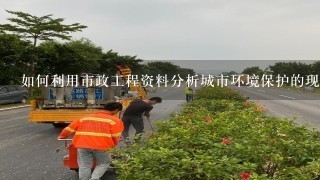如何利用市政工程资料分析城市环境保护的现状和未来发展趋势?

市政工程资料分析城市环境保护现状和未来发展趋势的步骤:
1. 数据收集
- collect city government data on environmental protection, including air quality, water quality, land use, waste management, and green spaces.
- collect data from non-governmental organizations, research institutions, and community groups.
2. 数据清洗和整理
- ensure data accuracy and completeness.
- identify and remove outliers and missing values.
- create a consistent data format for analysis.
3. 数据分析
- use statistical methods, data visualization tools, and machine learning algorithms to identify trends, patterns, and relationships.
- analyze the data to assess the current state of city environmental protection.
- forecast future trends in environmental protection based on past data and current trends.
4. 数据可视化
- create maps, charts, and graphs to visualize trends and patterns in the data.
- communicate the results to stakeholders and the public.
5. 评估和建议
- assess the results and identify areas for improvement.
- provide recommendations for policy changes, infrastructure development, and community engagement to enhance city environmental protection.
6. 持续更新
- regularly update the analysis to reflect changes in the city's environment and regulations.
- share the results with stakeholders and the public to promote transparency and accountability.
Tips for effective data analysis:
- collaborate with experts in environmental science and data analytics.
- use a comprehensive set of data sources.
- ensure data quality and integrity.
- use appropriate data analysis techniques.
- communicate results clearly and effectively.



























































